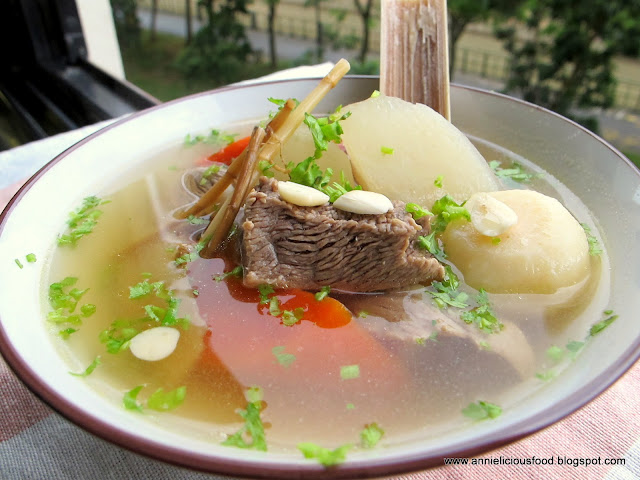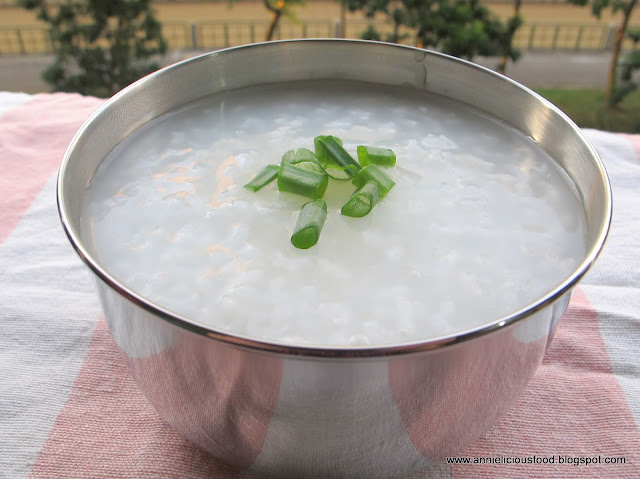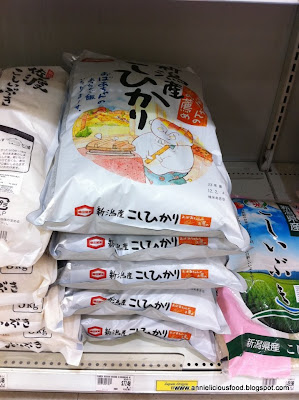Somebody ever told me that if I have a pack of good quality rice, but if don't have a good rice cooker, I might end up not able to cook the best rice. Since I've got myself a mighty Zojirushi Rice Cooker, I am now more determined to buy some better quality rice to give it a try. I could eat better too, in a way.
Ever since I've got my rice cooker, I had been reading alot about rice. There are an incredible number of varieties of rice in the world. What caught my attention is the varieties of rice that is available in Japan. And I will streamline to that. What I'm gonna share here are all my summarized understanding about Japanese Rice after a few reading & findings online.
Japanese loves rice. So do I. Obviously. Urgh!
Here is a list of some of the popular ones, imported from Japan, that can be found in Singapore...
- Koshihikari (I just bought this. Haha! Read on!)
- Akitakomachi
- Hitomebore
- Hinohikari
- Nanatsuboshi
- Mochi rice / Sweet rice
Other than defining the quality by it's variety, the quality of rice are also very much depends on which region that the rice is grown. When buying rice, you must consider two factors - the variety and place of production. For example, Koshihikari rice produced in the Uonuma district in Niigata prefecture is considered Japan's best Koshihikari rice and is very expensive, while Koshihikari rice produced in Chiba prefecture in the Kanto Plain is much less expensive. Something like that.
Those that you usually see in NTUC, Prime Mart, or Cold Storage, it is usually not imported from Japan. They are the same variety of grain, but harvested in USA or other places. Therefore, there is a difference in grades, taste, color and it's texture. And of course, the price is a big difference lah! :)
<< I had been eating this Hitomebore rice for the past without complain. It cost me S$19.90 for this 2kg bag. Got it at Shaw House at promo price. I would say, it taste decent and good. Has it's chewy texture and easy to handle.
Few weeks ago, I saw this at Jusco Tebrau City JB. They are selling at RM56.00!!! This is crazy can? How would a Malaysian spend such price for a pack 2kg rice? Well, maybe?
I believe that the Kokuho Rose and Calrose brands are at the low end in quality, though I can't recall specifically buying Calrose at any time. Yes, there is a difference. The color, the texture, the taste... It's just different. Calrose is a type of Japanese rice that was developed in California. Botan, Kokuho Rose, Nishiki, Shirakiku, etc. are brands of rice.
I had been wanting to try Koshihikari rice. It's just that I do not want to buy a pack of new rice without finishing my Hitomebore rice.
I'm eyeing on this pack of Koshihikari rice >>
for the past 2 weeks. Finally, I've got a pack over the weekend. It's labelled as Niigata Obaachan ("Obaachan" means Grandma) Osusume Koshihikari.
Koshihikari Rice
Koshikari is a super-premium Japanese rice that costs more than standard premium brands. Some brands are grown in California; some are imported from Japan. Koshihikari is grown not only in Niigata prefecture but also in other parts of the country such as Chiba prefecture, and even in the United States.
The Uonuma district in Niigata prefecture is famous for producing Koshihikari of top quality, and this is why Koshihikari produced in this district, or Uonuma-san Koshihikari ("san" means "produce"), is called "burando mai" (brand rice). Uonuma-san Koshihikari is ranked as Toku A. (Toku means Special).
Generally, rice is considered good if it is white, shiny, aromatic, sweet (becomes sweet when you chew it), sticky, and resilient. This is what I called good rice.
Mine is not specifically from Uonuma district. But still, it is from Niigata prefecture. The price is already very expensive loh. This bag of 5kg rice cost me S$77.40. It is the most expensive pack of rice that I've ever bought so far.
I really feel the pinch. And I was talking to this pack of rice while I carry em' up... "
You bloody expensive rice! You'd better worth the price and don't dissapoint me I tell you!"





















